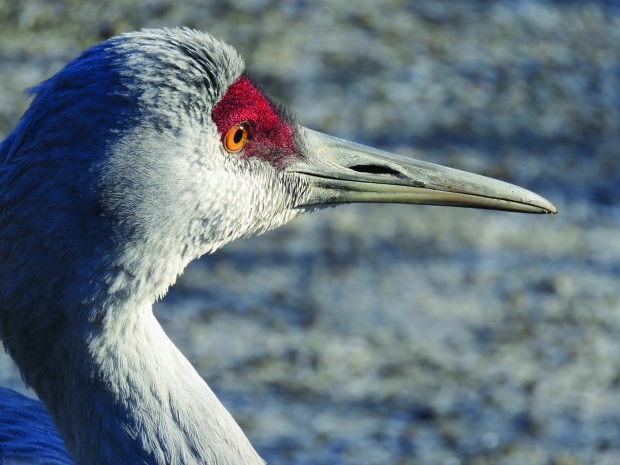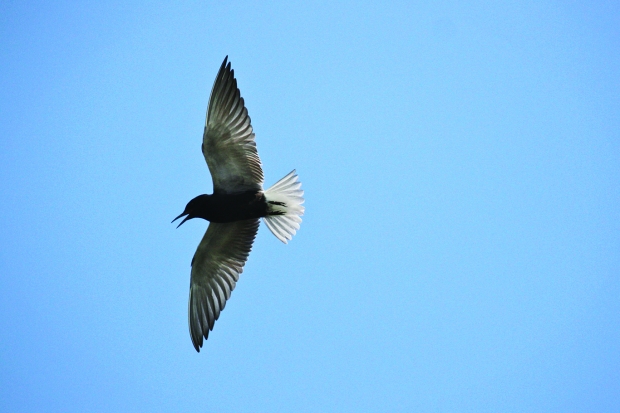Plan Would Restore Great Lakes Wetlands
Audubon plan restores 300,000 coastal acres to benefit birds, including areas in Wisconsin.

Sandhill cranes are one of 14 marsh birds that the Great Lakes Audubon have prioritized for conservation across 12 regions identified for coastal wetland protection and restoration across the Great Lakes. Photo courtesy of Great Lakes Audubon.
A new report from the Great Lakes regional arm of the National Audubon Society is outlining its plan to restore and protect a dozen areas that support region’s birds. Climate change, development and invasive species are threatening coastal areas of the Great Lakes region that is home to 350 bird species.
Great Lakes Audubon has identified 12 regions and nearly 300,000 acres of coastal wetlands for protection and restoration to benefit 14 marsh bird species that have been on the decline. Shrinking bird populations in the region are part of a larger trend as North America has lost nearly 3 billion birds since 1970.
The black tern is among marsh birds that have seen steep population declines due to deteriorating habitats and water quality stemming from human activities around the Great Lakes. The bird is listed as threatened, endangered or a species of concern in all Great Lakes states. Marsh birds are considered an indicator species for the health of coastal wetlands, which serve important functions by providing flood protection and filtering out pollutants.
The 12 areas identified for conservation include:
- St. Louis River estuary
- Green Bay
- The Calumet region
- St. Mary’s River
- Detroit
- Lake St. Clair
- Saginaw Bay
- Western Lake Erie Basin
- Buffalo
- Rochester
- Sodus Bay
- Eastern Lake Ontario
The 12 sites include 10 projects in Green Bay and the St. Louis River estuary in the Twin Ports where the black tern hasn’t been seen since the 1990s. The largest project prioritized in the estuary seeks to restore 850 acres of marsh in Allouez Bay in Superior that would support the species.
“We’re hoping to bring those guys back,” said Nat Miller, conservation director for Audubon Great Lakes and Mississippi Flyway.

The Great Lakes Audubon is trying to bring back black terns in the St. Louis River estuary as part of efforts to restore coastal wetlands to support marsh bird habitats. Photo courtesy of Great Lakes Audubon.
Conservation projects in Green Bay aim to reestablish marsh bird habitat, reconnect wetlands to Green Bay, convert cropland to wetlands and control invasive plants to restore wetlands. The projects would help support habitats for bird species that include the common tern, piping plover, yellow-headed blackbird, least bittern and American bittern.
“Green Bay has a vast majority of important coastal wetlands in Lake Michigan, or in Green Bay and kind of the extended area to the north,” said Miller. “Those are areas where we’ve identified 200,000 acres of wetlands in both Green Bay and the St. Louis River estuary.”
The plan, which builds off a study released last year, includes a total of 42 projects across eight states in the region as the Great Lakes face stress from extreme shifts in water levels, combined sewer overflows, and agricultural runoff that can contribute to harmful algal blooms that further degrade habitats.
“Those species are projected to lose nearly 100 percent of their range if global warming trends continue,” said Miller. “But, if we can reduce warming to about 1.5 degrees Celsius, which is really the best case scenario now, then we can maintain a significant portion of those birds’ current range, and they won’t have to adapt so heavily.”
Scientists have recommended reducing global warming by 1.5 degrees Celsius or roughly 3 degrees Fahrenheit to stave off the worst effects of climate change.
Great Lakes Audubon plans to restore 37,400 acres of the wetlands they’ve identified over the next decade and work with partners to reach its restoration goals. They also note the effort will require significant investment through support from programs like the federal Great Lakes Restoration Initiative.
The group supports gradually increasing funding for the Great Lakes cleanup program from $300 million to $475 million by the end of 2025, as well as reauthorizing the state Knowles-Nelson Stewardship Program at $32 million each year for another decade. Gov. Tony Evers has proposed funding the program through $70 million in bonding each year under the next two-year state budget, which is likely to be scaled back in the Republican-controlled Legislature.
Listen to the WPR report here.
Audubon Plan Aims To Restore Nearly 300K Acres Of Great Lakes Coastal Wetlands To Benefit Birds was originally published by Wisconsin Public Radio.





















